Two years ago, my wife and I moved further out into the country…. basically built a house on 15 acres in somewhat isolated woods. We tried our best to limit the amount of clearing so we could enjoy the sights and sounds of nature – our little escape from the hectic stressful lives we live during the week. The first year was focused on getting the house built and managing the new property. Last year I finally got around to hanging a birdfeeder in a tree just outside our balcony which happens to be placed perfectly out my master bedroom window so it is the first thing I get to see in the morning (thanks to LASIK it is no longer just a bunch of fuzzy shapes). I soon became fascinated by the daily visits of various birds and eventually evolved to trying to take pictures of as many as I could. Now, it has been a long time since I did a lot of photography, but this has turned out to be a little challenging due to having to shoot through windows, trying to focusing on nervous birds and fighting the lighting. There is improvement as I experiment with settings and angles but clearly a long way to go. The side effect of all of this is I’ve become intrigued by the differences in the birds – sizes, colors, social behaviors, eating patterns and food preferences. My wife says I am bordering on obsessive and likes to rib that is an “old” person’s hobby. It occurred to me while going through about 400 pictures to date that this might be something interesting to blog about from time to time. So……. you guessed it. I do not know the frequency yet, but I there is a lot to draw from and hopefully you will enjoy see what I have the luxury of witnessing every day. If you can help out with any naming corrections or additional input, it would get GREATLY appreciated. So with my trusty Nikon digital camera and “Birds of North America – A Guide to Field Identification” – by Golden Field — special note, I am using the same bird guide I have had for my entire life – published in 1966
Today, I thought I would start with some quick shots of the yard and focus on the Chickadee.
Starting off, here are two quick shots of the yard. As you can see we are pretty deep in the woods which gives us a great chance to photograph lots of different birds.
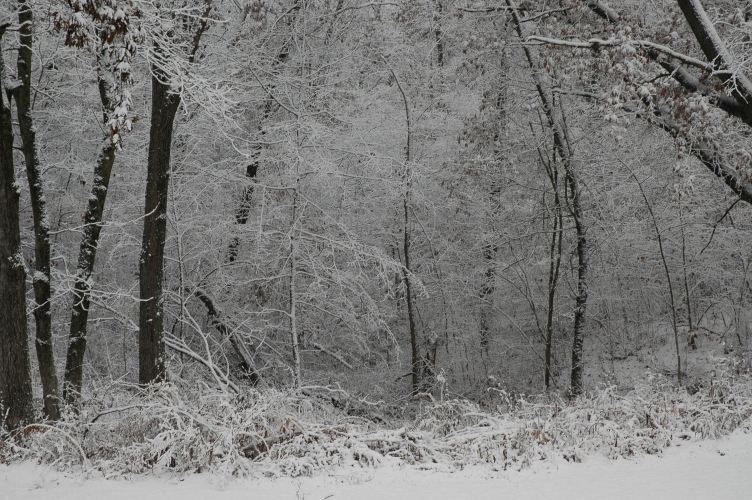
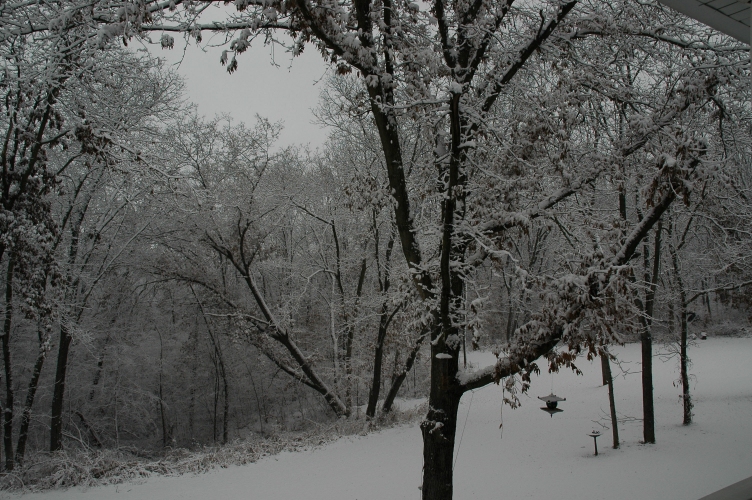
You can barely see the original birdfeed my brother gave in the second picture. It is actually lined up with the trunk of the tree and has a little snowcap on it. This one tries to thwart the pesky squirrel by having a spring loaded covering which closes the seed openings if excess weight is hanging from it. The other birdfeeder was from National Geographic, but I have since replaced it because it was too difficult to refill and eventually the top nut locked onto the threads so I couldn’t even get the top off. Instead, I now have a much larger feeder which allows me to load bigger seed to attract the larger birds. The first feeder is targeted for the small bird and basically filled with a premium finch mix. Unfortunately, seed is a little pricey at the moment.
For the first bird post, we are going to focus in on the Chickadee. This little bird started showing up fairly quickly and usually shows up at least once a day. Based on the guide, it looks to be a Black-Capped Chickadee, but to be honest, I really can’t tell the difference between that and the Carolina version. It started out eating at the finch feeder, but has since migrated over to the larger seed in the other feeder. I find it to be a tad skittish and doesn’t hang around the feeder for very long at all. It prefers to actually dive in, pick out his favorite seed and then flee into the tree branches to finish it off. I doesn’t seem to be very aggressive to any of the other birds and definitely gets along well with its own kind – unlike the finches who like to knock each other off of the hole perches. Here is one of my early shots which is a little fuzzy – I should probably point out that I generally use a 300 auto-focus lens and max picture size on the camera. Although I am pretty good at Paint Shop Pro, I have had to fight quality against manageable picture size, so some of the loss of quality results from that transformation… and yes, a lot of it is still to blame on my photography skills (… and there will be muuuuch worse pictures coming in future posts).
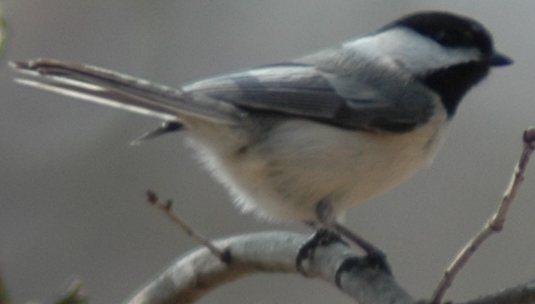
Here is one with better lighting
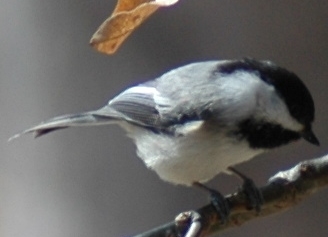
They tend to fly down to a nearby branch and survey the situation before landing on the feeders. As far as I can tell, they are not bothered by other types of birds, but try to keep their distances from the woodpeckers – again, they tend to stay for only short stints at a time. Speaking of woodpeckers, I really like this next shot since it has a) a glimpse of a bird type to cover in the future and b) has the chickadee actually in a unique position – typically it stays pretty horizontal most of the time contrasted with the woodpeckers that stay primarily vertical.
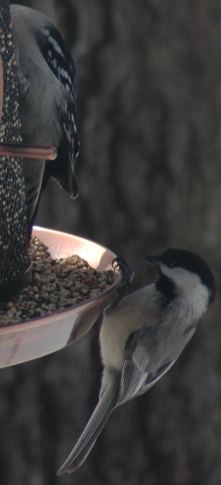
The next picture gives a really good view of the back feather markings. The cardinal was actually a little ways away, but he kept his eye on it before eventually diving down to the feeder below.
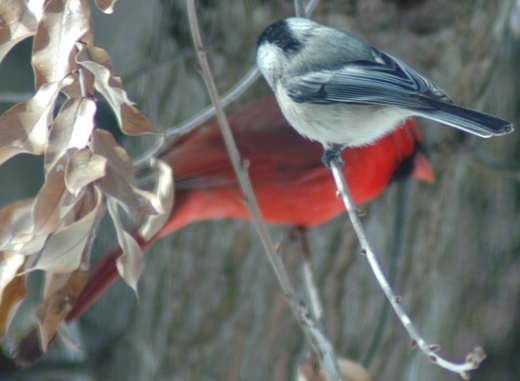
Well, it’s time to fly…
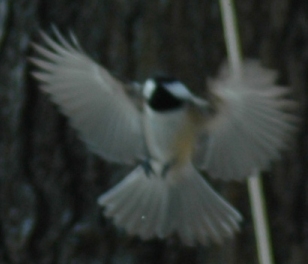
so I better simply wrap this up and call it a post. Hopefully you found some interest in the topic… if not, you are probably going to be bored for the next few posts.
The End
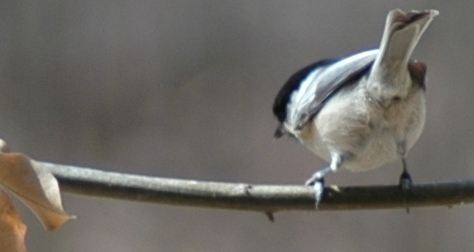


Cool pictures!! That one with both the chickadee and cardinal is just great. Birds are notoriously hard to photograph well.
Thanks and I agree with the difficult to photograph statement
There are a number of great birding sites online (do a Google search on birding), but I really like http://www.whatbird.com/ .The home page is busy, but with the Search, Browse and Expert menu options along the top you can search for birds by name or by a combination of selected attributes or have a wizard ask you questions. Then you get the bird book pictures and maps and even links to hear their songs. And the Avian Sleuth game at the bottom of the home page is really nice. Another highly recommended site is http://www.birds.cornell.edu/AllAboutBirds/
Ron
Thanks, my field guide is definitely missing some bird types and leads to lots of confusion on how they depicted the juvis and females. I tried the whatbird site today (horrible front page design), but I liked the question approach to finding out the bird type. Although I tried it on the bird in the following post and still couldn’t determine what it was – must be a dodo